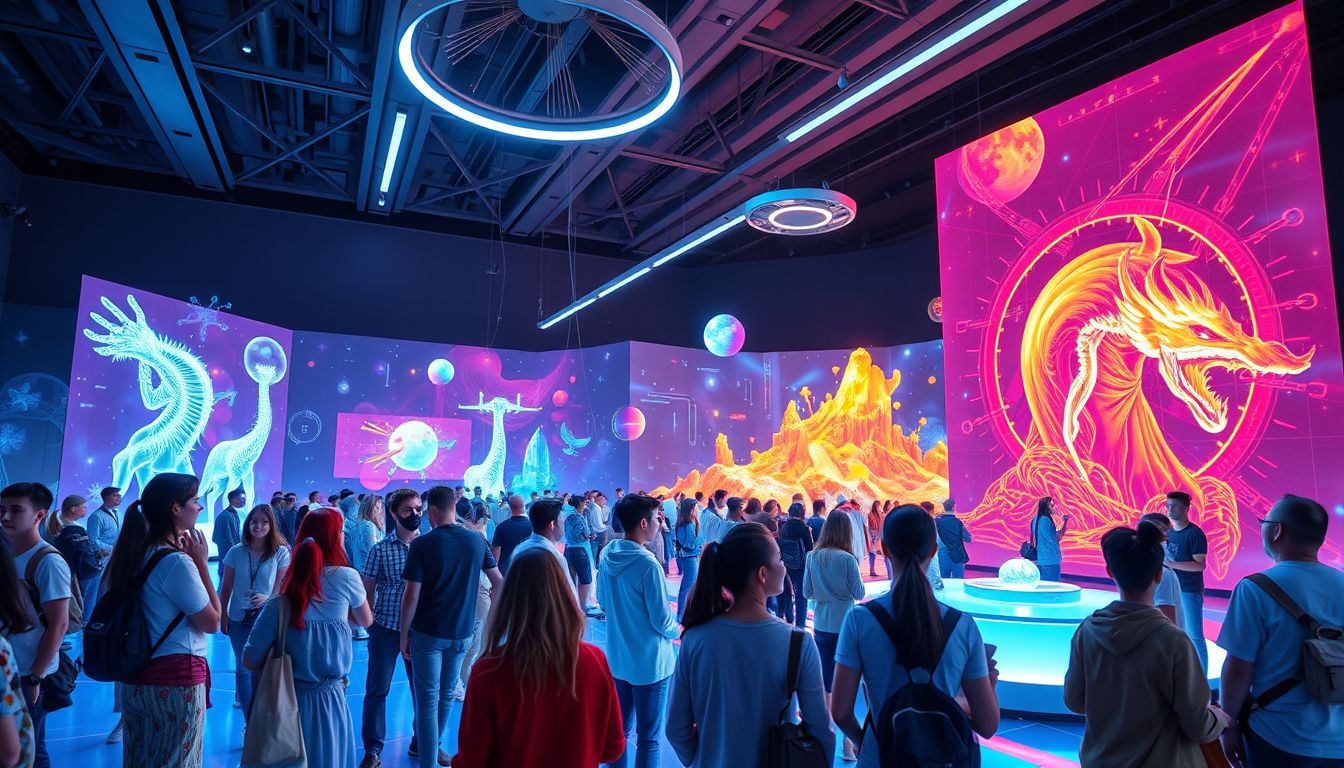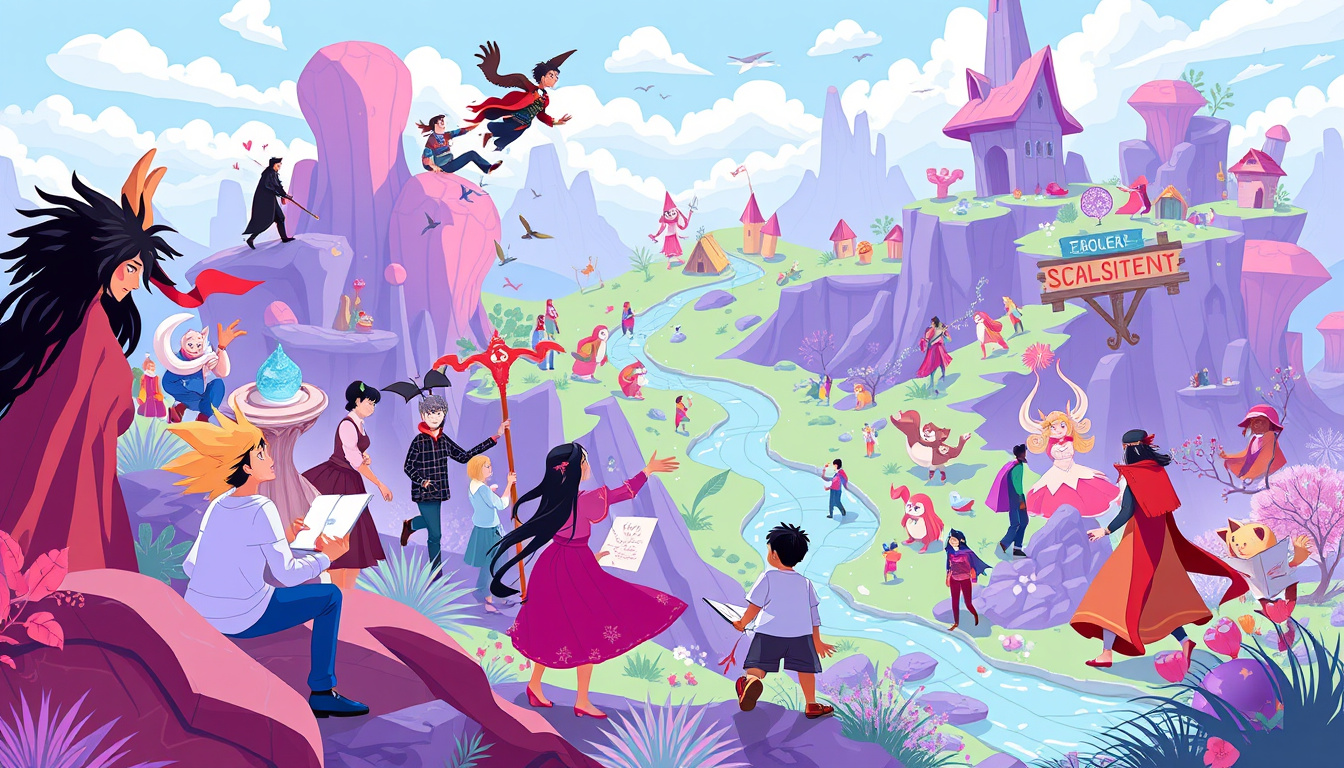As we plunge deeper into the 21st century, the future of storytelling: engaging audiences in new and innovative ways is rapidly reshaping how narratives are crafted and consumed.
With the advent of technology transforming every aspect of our lives, storytelling has transitioned from oral traditions to complex digital narratives, creating immersive experiences that captivate and engage like never before.
In this article, we will explore the evolution of storytelling, the role of modern technology, the rise of interactive storytelling, the blending of cross-media formats, and the significant impact social media has had on how stories are told today.
Each of these elements contributes to a rich tapestry of narrative possibilities that not only connect but also empower audiences in exciting new ways.

The Main Points:
- Storytelling has evolved from ancient oral traditions to encompass digital narratives that reach wider audiences.
- Technology plays a crucial role in enhancing storytelling through innovative tools and platforms.
- Interactive storytelling empowers audiences by giving them the choice and agency in how they experience a narrative.
- Cross-media storytelling enriches the experience by blending different formats, creating a more immersive narrative.
- Social media presents both opportunities and challenges for storytellers, influencing how stories are shared and consumed.
The Evolution of Storytelling: From Oral Traditions to Digital Narratives
The evolution of storytelling is a fascinating journey that reflects the changes in human communication and technology over centuries.
From the ancient oral traditions, where stories were passed down through generations by word of mouth, to the advent of written forms, storytelling has adapted to fit the cultural and technological landscapes of the times.
With the rapid advancement of technology, we now stand on the brink of a new era in storytelling – one that involves multimedia elements and interactive experiences.
As we look ahead, the future of storytelling promises to engage audiences in new and innovative ways.
Virtual reality, augmented reality, and transmedia storytelling are just a few examples of how creators are redefining narrative experiences.
Today, stories can be told not just through text or video but through interactive platforms that invite audiences to participate actively in the narrative.
This shift not only enhances the storytelling experience but also fosters a deeper connection between the storyteller and the audience, making it essential for content creators to embrace these emerging forms of storytelling to stay relevant in a rapidly evolving digital world.
The Role of Technology in Shaping Modern Storytelling
In today’s digital age, technology plays a pivotal role in transforming the way narratives are created and consumed, paving the way for what many refer to as the future of storytelling.
Innovative technologies such as virtual reality (VR), augmented reality (AR), and artificial intelligence (AI) are not just enhancing traditional storytelling methods but are also reshaping audience engagement in unprecedented ways.
For instance, VR allows viewers to immerse themselves in a story, making them active participants rather than passive consumers.
On the other hand, AI-driven platforms enable personalized storytelling experiences tailored to the preferences of individual users, ensuring that each engagement feels unique.
As creators leverage these tools, they are finding new avenues to captivate their audiences, fostering deeper connections that resonate on a personal level.
This evolution not only enhances the emotional impact of stories but also broadens the scope of what storytelling can achieve, making the future of storytelling not only intriguing but also a vital component in modern communication.
‘The story is the thing, but our storytelling continues to evolve with the times.’ – Anonymous

Interactive Storytelling: Engaging Audiences Through Choice and Agency
Interactive storytelling is rapidly becoming a significant force in the entertainment industry, reshaping how we consider narrative engagement.
As we explore the future of storytelling, it’s clear that engaging audiences in new and innovative ways is essential to capturing their attention and fostering deeper emotional connections.
This approach allows users to actively participate in the storyline, making choices that influence the direction and outcome of the narrative.
By incorporating elements such as branching narratives, customizable characters, and real-time decision-making, interactive storytelling not only enhances audience involvement but also creates a unique sense of agency.
As technology continues to advance, platforms that harness virtual reality, augmented reality, and interactive video content will undoubtedly play a pivotal role in crafting immersive experiences.
In this evolving landscape, brands and creators who embrace these interactive techniques will not only stand out but also create richly layered stories that resonate with their audiences, ensuring that the future of storytelling is as much about the audience’s journey as it is about the narrative itself.
Cross-Media Storytelling: Blending Formats for a Richer Experience
The future of storytelling is rapidly evolving, with cross-media storytelling leading the charge in engaging audiences in new and innovative ways.
This dynamic approach allows creators to blend multiple formats—be it video, augmented reality, podcasts, or interactive web experiences—into a cohesive narrative that captivates viewers across various platforms.
By harmonizing different media, storytellers can not only cater to diverse audience preferences but also enhance emotional engagement, as the same story can be experienced through multiple lenses.
For example, a single narrative explored through a graphic novel, a web series, and an immersive video game stimulates curiosity and fosters community discussions among fans, thereby expanding the reach and impact of the story.
As we delve deeper into the future of storytelling, the integration of technology will play a pivotal role.
Augmented and virtual reality, in particular, are set to redefine how stories are told, allowing audiences to step into the narrative and interact with characters and environments in ways never before possible.
Ultimately, cross-media storytelling promises to transform our experience of narratives, inviting us to participate in a richer, more interactive dialogue with the stories that resonate with us.

The Impact of Social Media on Storytelling: Opportunities and Challenges
The impact of social media on storytelling is profound, leading to a dynamic evolution that presents both opportunities and challenges.
As platforms like Instagram, TikTok, and Twitter become integral to how stories are shared and consumed, the future of storytelling is increasingly characterized by engagement through creative formats and interactive content.
Storytellers now have the ability to reach wider audiences and connect with communities globally, using short videos, live streams, and user-generated content to enhance narrative experiences.
However, this shift also brings challenges, such as the need for authenticity amidst the pressure for instant virality and the saturation of content that can dilute message clarity.
As we explore the future of storytelling, it’s crucial for creators to adapt their strategies, leveraging social media’s strengths while remaining vigilant of its pitfalls.
By understanding these dynamics, storytellers can harness the full potential of social media to captivate audiences in new and innovative ways.
Common questions:
What are the main ways storytelling has evolved over time?
Storytelling has evolved from oral traditions to written narratives, and now to digital formats.
This evolution includes the rise of film, video games, and interactive media, which allow for more immersive and participatory experiences.
How does technology influence modern storytelling?
Technology plays a pivotal role by enabling new formats and methods of storytelling, such as virtual reality, augmented reality, and interactive platforms.
These technologies allow storytellers to create more engaging and dynamic narratives that captivate audiences.
What is interactive storytelling and why is it important?
Interactive storytelling allows audiences to make choices that affect the outcome of the story, providing a sense of agency and involvement.
This enhances engagement and personal investment in the narrative, making the experience more memorable.
How can cross-media storytelling enrich the narrative experience?
Cross-media storytelling combines multiple formats (like books, films, games, and social media) to create a richer and more complex narrative.
This approach can deepen audience engagement and allow for more diverse storytelling techniques.
What role does social media play in the future of storytelling?
Social media serves as both a platform for sharing stories and a tool for audience interaction.
It offers opportunities for storytellers to reach larger audiences and for communities to engage with narratives in real-time, but it also presents challenges such as the spread of misinformation.
—————————————————-
Are you tired of the 9-to-5 grind? Unlock the secrets to online income generation. GetIncomeNow.com is your roadmap to financial freedom. We reveal proven methods, insider tips, and cutting-edge strategies to help you achieve your income goals. Start your journey to financial independence today!
